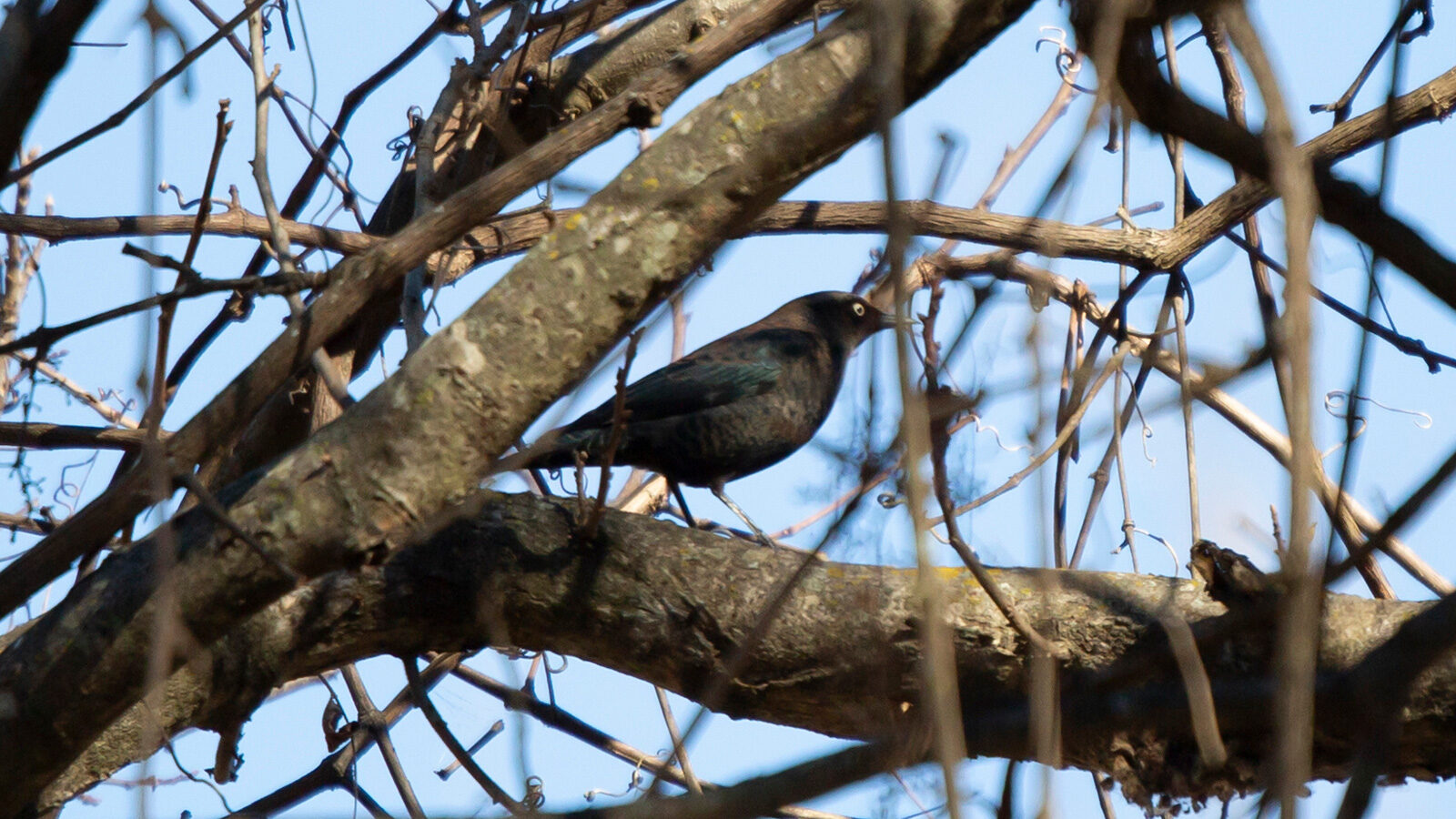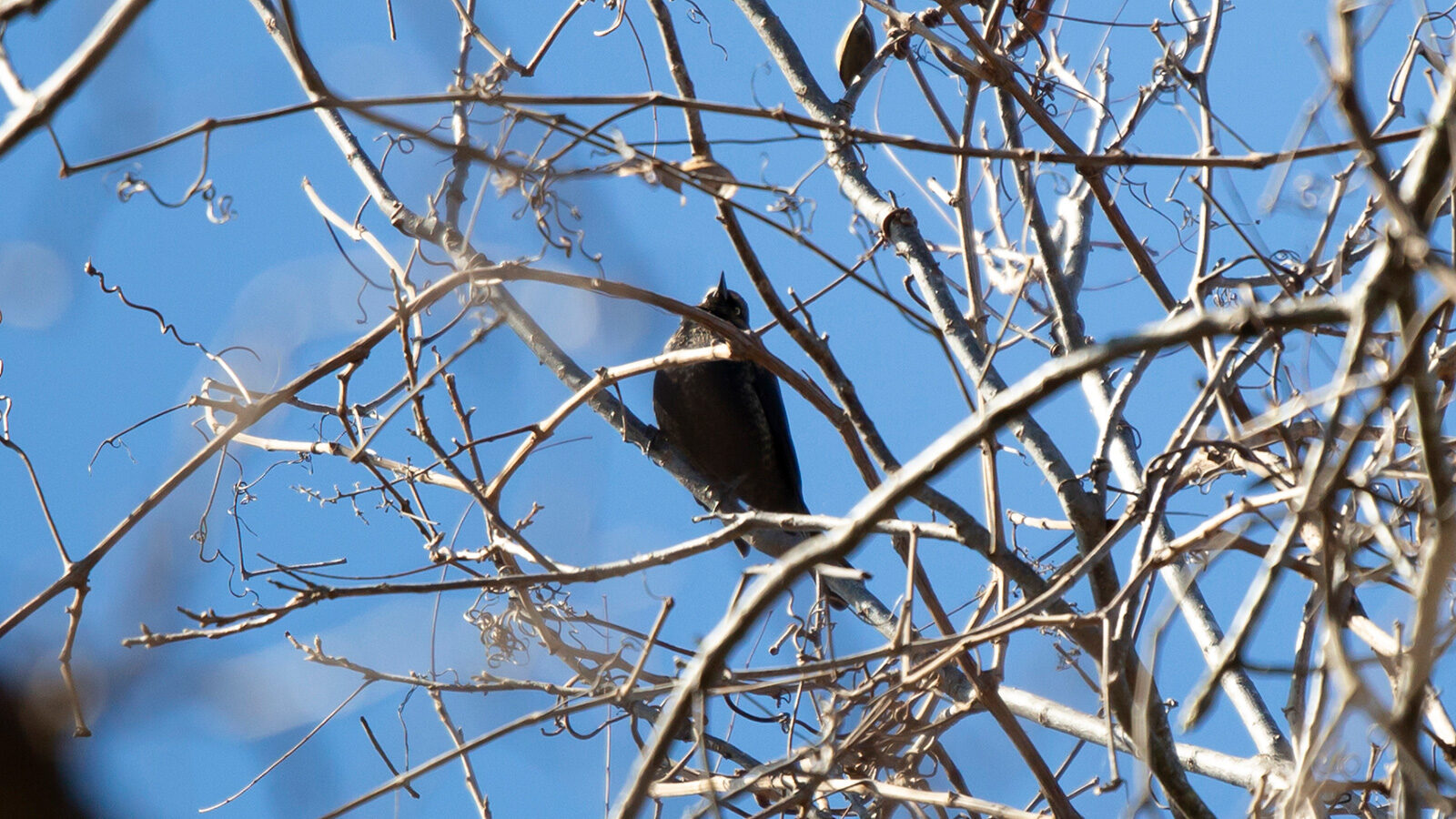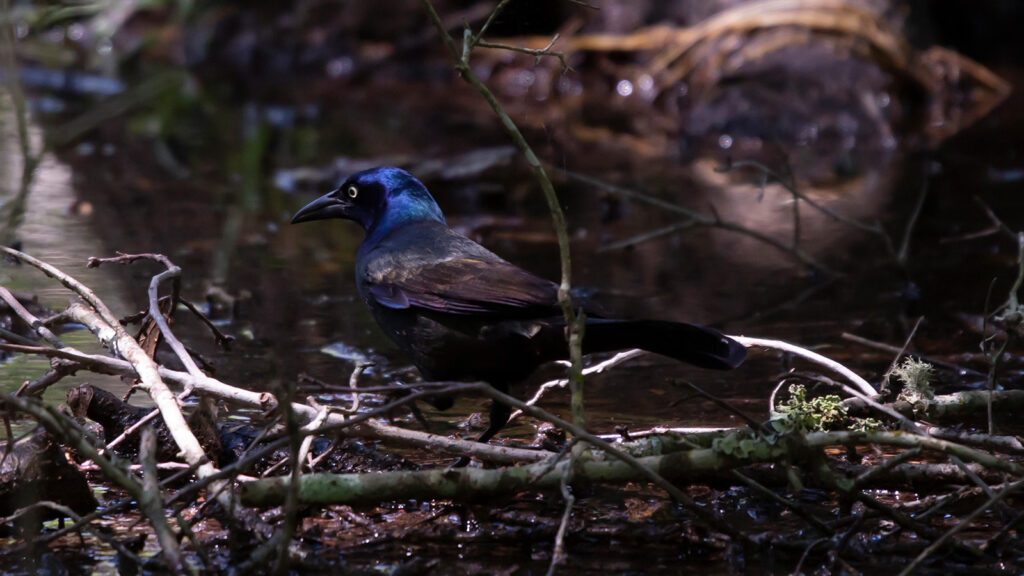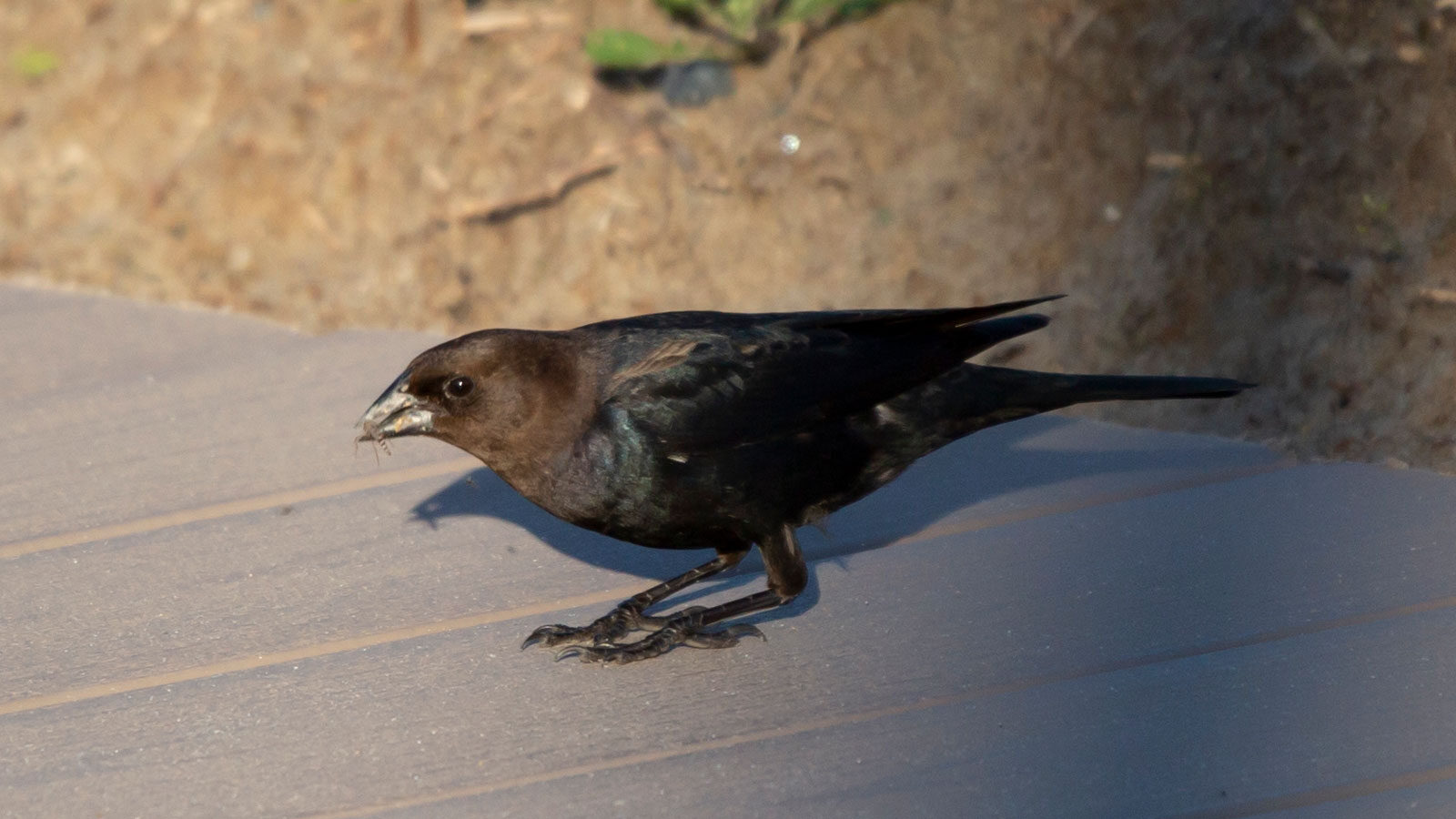
Did you know that rusty blackbirds winter in small flocks with other blackbirds?
Rusty Blackbirds
at
a Glance

Key Features:
Male rusty blackbirds are glossy black birds with rusty edges on their feathers in winter. Females are gray-brown with rusty edges on their feathers in winter.
Least Concern - Population Decreasing
Habitat:
Forests, pond edges, and swamps
nesting habits:
Rusty blackbirds build bowl-shaped nests in shrubbery or trees out of grass, lichens, rotting plant matter, and twigs.
seasons rusty blackbirds are active in our area:
Winter
Diet:
Acorns, fruit, insects, and pine seeds
hunting Behavior:
Rusty blackbirds forage on the ground and in shallow water.
Commonly Confused With:
Brewer’s Blackbirds, Brown-Headed Cowbirds, Common Grackles, and Red-Winged Blackbirds

Rusty blackbirds are often confused with common grackles because both are black. Male common grackles have iridescent blue heads. Female common grackles are larger with longer tails and larger beaks.

Rusty blackbirds are often confused with male brown-headed cowbirds because both have glossy black bodies. Rusty blackbirds have black heads. Male brown-headed cowbirds have brown heads.